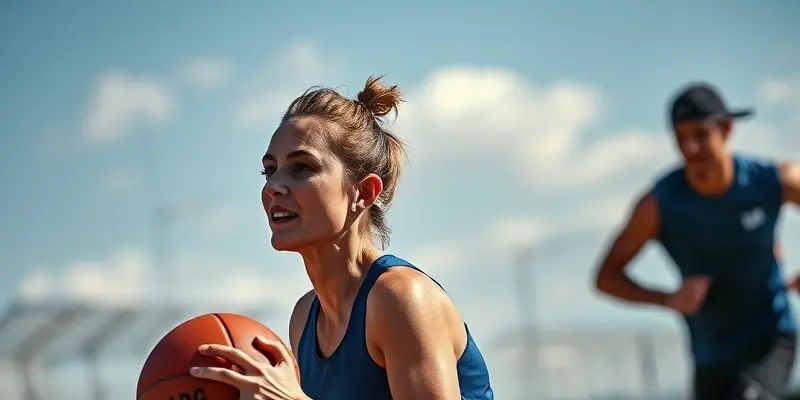Adaptive Fitness Equipment: Revolutionizing Recovery & Injury Prevention
Injuries happen. Whether you’re a weekend warrior, a dedicated marathoner, or simply excited about an active lifestyle, setbacks can be frustrating—or downright disheartening. But here’s good news: the world of adaptive fitness equipment is transforming how we approach both prevention and recovery. If you’ve ever wondered how to stay strong during downtime or speed up your return to training, you’re in the right place.
What Is Adaptive Fitness Equipment?
Adaptive fitness equipment refers to tools and machines designed with inclusivity and versatility in mind. Unlike standard gear, these devices are built to accommodate different levels of mobility, strength, or injury. Think of them as the Swiss Army Knives of the gym world: they level the playing field so anyone—injured, recovering, or managing a disability—can move safely and effectively.
Who Benefits from Adaptive Equipment?
- Amateur and elite athletes managing injuries
- People with chronic mobility issues
- Beginners building safe exercise habits
- Anyone seeking low-impact, tailored workouts
Key Categories and Examples
- AlterG Anti-Gravity Treadmill: Uses air pressure to reduce body weight, letting you walk or run with far less strain—perfect for rehabbing lower limb injuries.
- Seated Cardio Machines: Recumbent bikes and arm ergometers make cardio possible even if standing is uncomfortable.
- Resistance Bands & Adaptive Grips: Versatile and portable, these tools scale resistance while supporting those with grip challenges.
- Wheelchair-Accessible Machines: Enable full-body and strength workouts right from a seated position.
How Adaptive Equipment Prevents Injuries
One key advantage is personalization. These tools allow you to train at your current capacity—not someone else’s. Here’s how they keep you safer:
- Gradual Progression: For instance, the AlterG treadmill lets runners incrementally add weight as healing progresses, reducing re-injury risk.
- Focus on Form, Not Pain: Seated or modified equipment supports proper movement without overloading vulnerable joints and tissues.
- Early Movement: Adaptive methods allow for gentle, controlled exercise as soon as possible after injury, preserving strength and range of motion.
Pro Tip: Even if you’re healthy now, building variety and modification into your routine with these tools lowers your overall risk of overuse injuries.
Recovery Strategies Beyond Equipment: Nutrition & Mindset
Recovery isn’t just physical—it’s holistic.
Nutrition: Feed Your Healing
- Prioritize Protein: It rebuilds muscle and connective tissue.
- Micronutrients: Vitamin C, zinc, and anti-inflammatory foods (like berries and green vegetables) speed repair.
- Hydration: Crucial for tissue healing and joint health.
Psychology: Stay Motivated
- Set Micro-Goals: Celebrate small wins, whether that’s an extra minute on the recumbent bike or a new range of motion.
- Visualization: Picture yourself moving well and strong again with visualization for healing.
- Routine: Stick to a structured schedule—a crucial anchor during rehab.
Real-World Application: From Setback to Comeback
Imagine Sarah, a recreational soccer player sidelined by an ACL injury. Early use of the AlterG treadmill helped her regain running confidence while protecting her healing knee. In parallel, she used resistance bands to strengthen her hips and core, supported by a nutrition plan focusing on lean protein and colorful veggies. Her coach encouraged goal-setting, turning each small milestone into a reason to keep going.
Or consider Tom, recovering from shoulder surgery. Seated arm ergometers and adaptive grips allowed him to maintain cardiovascular fitness while sparing his injured side. Regular check-ins with a physical therapist ensured his technique (and spirits) remained high.
Actionable Takeaways: Start Adapting Your Fitness Journey
- Consult a Pro: Ask a trainer or physical therapist about adaptive options tailored for you.
- Mix It Up: Include both adaptive and traditional equipment to keep workouts engaging and safe.
- Listen to Your Body: Modify intensity and type of exercise as needed—prevention is always better than cure.
- Support Recovery: Don’t underestimate the power of nutrition and mindset during downtime.
Conclusion: Strength in Adaptation
Injury is not the end—it’s an opportunity to rethink, rebuild, and return stronger. Adaptive fitness equipment empowers everyone, regardless of ability or setback, to keep moving forward safely. Coupled with smart nutrition and mental resilience, you’ll not only overcome injuries but set the stage for long-term wellness.
Ready to future-proof your training—or make your best comeback yet? The right tools, attitude, and care are waiting for you at every step. Stay strong, Gympulse Club!

